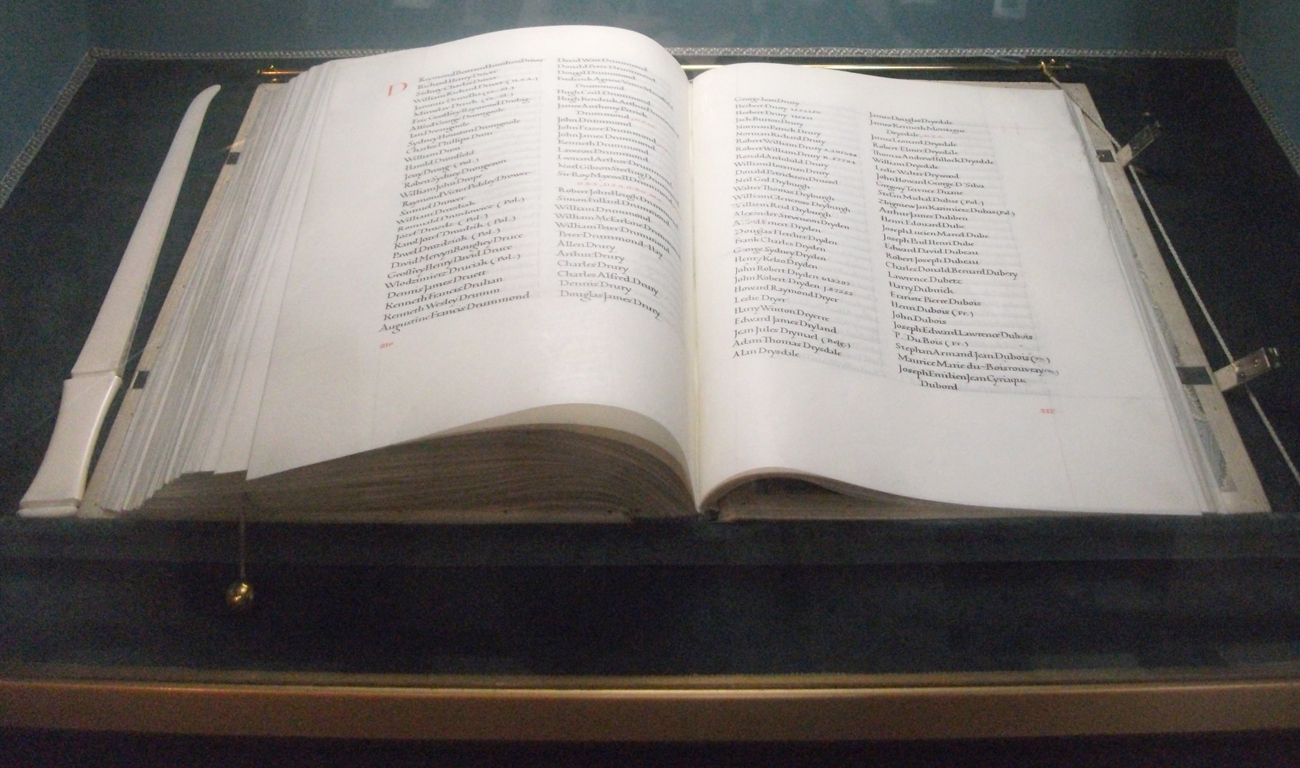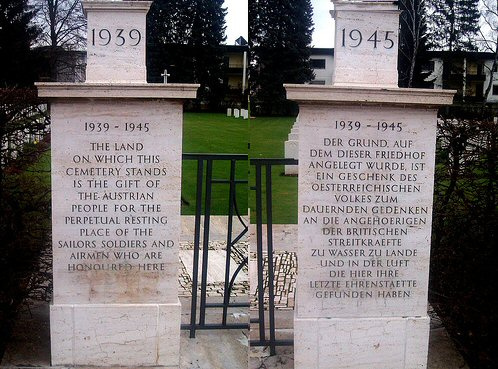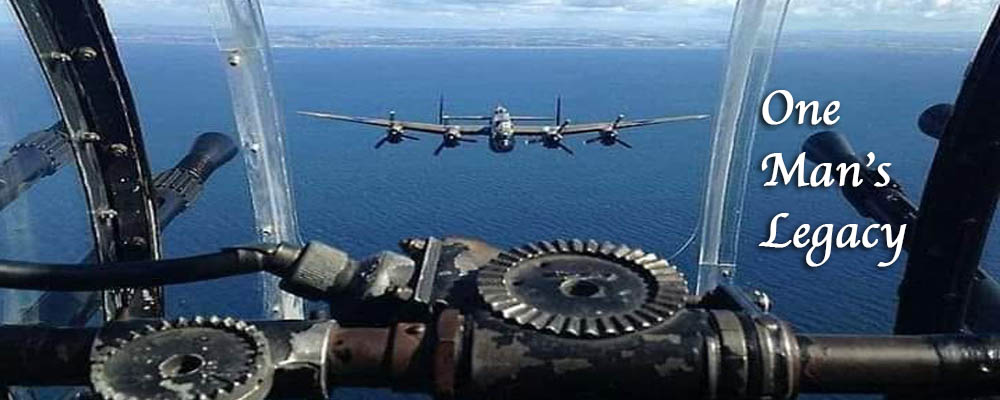 The view from the rear gunner's seat in a World War II Lancaster bomber (photocredit) |
||
|
|
||
|
Kaye Duffy, April,
2003, Newcastle. Sixty years ago, my father died a hero. Flight Sergeant Josiah Turner was killed when the Lancaster bomber in which he was rear gunner was shot down while bombing the Bucharest Railway Yards in Romania. He was never a medal winning hero, but he has remained for the past 60 years my private hero, occupying a quiet corner of my mind and giving me a sense of strength and purpose on which I have always drawn. It seems silly that a woman now in her sixties might look to a young man who died at 23 for her inspiration, but too many things have happened across the years that support my belief that the dead live on in our hearts and lives. Their beliefs become their legacies. My father was one of the hundreds of hastily trained young Australians and Canadians who were seconded from the RAAF to the British Royal Air Force after the devastating loss of aircrews in the Battle for Britain. |
||
|
He had married my mother three years earlier while on leave, and his death left a huge hole in our lives, made worse by the fact that he was listed as missing for almost a year before his death was finally confirmed. After the war, my mother went back to work, and I was cared for in a loving extended family. My mother's career led her to become part of Newcastle Legacy and that organisation gave us both support and strength beyond our expectations, as it did for so many other war widows and their children. She eventually retired after working as a social worker then Administrative Officer, but sadly died of cancer within four years of her retirement. The links with my father are sometimes almost mystical. Others are more matter of fact. For many years my mother had a little box in her bedside table. When she was packing to move from her city home to her retirement villa I asked if I could have a blackened and twisted metal band it contained. Reluctantly, she gave it to me. It was the signet ring my mother gave my father for his 21stand he had worn into battle. It was cut from his hand and returned with other personal effects, such as his flying log, which I still keep. |
||
|
He explained that the process of restoration might destroy it but I was willing to take the chance. The excitement in his voice when he called me a month later was unmistakable. When I collected the ring it was in perfect condition. I wore it for many years before giving it to my eldest son, Josiah's namesake, on his 30thbirthday. My father had a passion for raising German Shepherds. When he enlisted he took his favourite Shepherd into the Air Force with him, and she served as a guard dog. It was in the early 50's that we received a letter to say "Diana" had died. His dog survived him for ten years and had enjoyed a rewarding retirement with her former handler. When I went to England in 1970 for an extended working holiday, I often spent a day in London exploring museums, churches and galleries. I had promised my mother I would visit St Clement the Dane Church near Fleet Street, the official church of the RAF (right). |
||
|
|
For many months I put it off, though I often walked past it. On one summer day I was drawn inside - my mission to look at the Book of Gold that bears the names of RAF personnel who lost their lives in the wars. Each day a page is turned to reveal a new page of names. On the day I ventured in, I was astonished to see my father's name right in the middle of the page. More than 30 years later that experience remains one of the most moving I have had. I often wonder about the force that carried me inside the church on the particular day of the year that his name was displayed. |
|
|
When we decided to return to Australia we were desperate to find the cheapest option and finally settled on a charter flight (we even had to take a packed meal to get us to Singapore! ). The pilot made only one announcement on that flight. As we flew over Austria he commented that for any Australians on board who might be interested, we were flying over the Commonwealth War Cemetery in Klagenfurt, the very place in which my father had been buried. It was more than 15 years before I returned to Europe and my husband, Roy, insisted on taking me to Klagenfurt to visit his grave. I did it in the company of 40 others in a tour group - some young Germans who respectfully asked if they could accompany me, as well as a lovely Australian dentist and his wife. He had been a wartime pilot too. right: Commonwealth War Cemetery in Klagenfurt, Austria |
||
|
There was much joy in that visit as there was just five years ago when again at Roy's insistence, we went to the Isle of Capri where my father had spent his last few days of R and R. We visited the Villa of San Michelle from where my father had purchased a tiny brass bell that he had sent me for my second birthday, just before he died.
His death while flying over Romania has also brought connections and welcome threads into my life. When I joined the Good Neighbour Council in the 60s, I met a Romanian woman of incredible strength and courage who has rebuilt her life in Australia. Forty years later she and her family remain dear friends and she is my example of the incredible sacrifices women made in wartime and often in resettling in new countries many thousands of miles from family and everything they valued. Almost a year ago my father's younger sister, Lila, died. My dad's family was a Newcastle family. My grandfather was a dairy farmer with his milking herd on Mosquito Island and his dairy on the high land in Elizabeth Street, Tighes Hill, where the family home still stands. My father was a cherished, and as I was often told by my two paternal aunts, a much spoilt youngster. I'm glad of that because he had such a short time in which to be loved. My two aunts, Jean and Lila, who were well known Newcastle identities before their respective moves to Sydney and Perth, were always great influences in my life. I felt bereft last year when that last direct paternal link was lost. The sense of loss was heightened by the loss a couple of months later of my maternal aunt. But loving relationships continue with the younger members of those families and I now find myself as the matriarch! My father's legacy is greater than a courageous young man of 23 might ever have imagined possible. I still laugh at family tales of his short-comings and although I am a pacifist, I rejoice that others found the will to defend what they believed to be right and just. I hold him close in some cherished photos and with his few official war medals. Each Anzac Day I accompanied my mother to the Dawn Service. Each year I wish my only surviving uncle, who was in the Navy, a happy Anzac Day, which until recently he was able to spend with mates. Last year I started going to the Dawn Service again, urged on by a dear friend who wanted to share the experience. I have preserved the physical links with my father by recording his name on my mother's headstone at Palmdale Cemetery and on a plaque my mother and I laid together in the Memorial Grove in Civic Park. He also lives on in my three sons, the eldest in his name, the middle one with his passion for photography, and the youngest who bears an uncanny physical resemblance. This year on Anzac Day especially I will reflect on his sacrifice as many thousands of others will do across our country. We all have our heroes, and we remember them. |
||
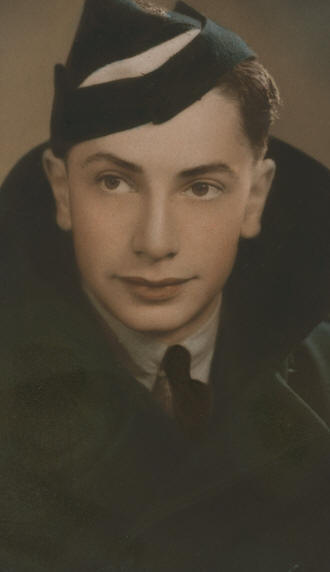
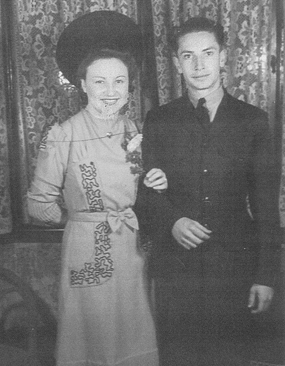 He was
shot down three times, surviving the first two only to die on July 7,
1944.
He was
shot down three times, surviving the first two only to die on July 7,
1944.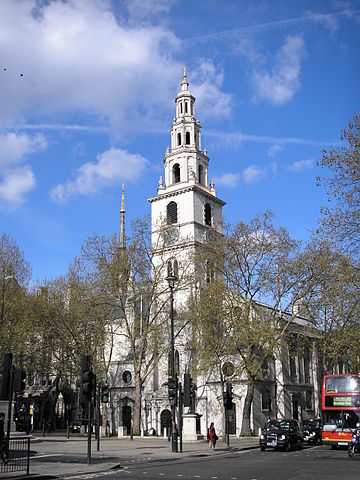 After
many months I wandered into a little jewellery store in Hamilton and the
elderly European jeweller took a special interest in the ring.
After
many months I wandered into a little jewellery store in Hamilton and the
elderly European jeweller took a special interest in the ring.